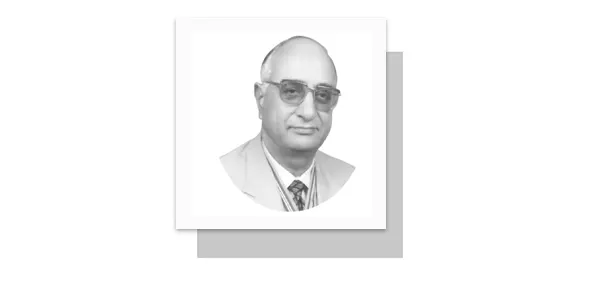AROUND the world, there is an end of public health emergency against the use of face-masking in the prevention of the SARS-CoV-19 pandemic. During the height of pandemic, the virus has killed millions of people in the world, significantly altering the health-care system in a respective country. One of the most visible change in the system is the cessation of universal face-masking, a measure to reduce SARS-CoV-19 and transmission of other respiratory, viral and bacterial infections in vulnerable masses, especially the old and sick ones. With the end of the public health emergency, however, many health caring centres all over the world are now stopping the use of face masks and reverting only to limited circumstances, like using by the health-care workers and those family members who are caring their patients or those vulnerable to respiratory diseases.
Discontinuing masking outside health-care contexts is understandable after acquiring immunity by means of vaccination and the out-come of infections, combined with the widespread availability of rapid diagnostics and effective treatments. It has dramatically reduced the morbidity and mortality associated with SARS-CoV-19. and other respiratory infections. Most SARS-CoV-19 are now no more burdensome than the infections caused by influenza and other respiratory viruses that some people, no doubt, have tolerated without using the mask.
In fact, vaccines and treatments have reduced the morbidity and mortality associated with SARS-CoV-19 infections in the majority of the population, but there remains important subgroups that continue to be at elevated risk for severe disease including older adults and sick people with immune-compromising conditions such as chronic lung disease or heart disease. Members of these groups constitute a large portion of hospitalized patients who make frequent visits to outpatient health facilities.
Since nosocomial infection.(originating in the hospital) caused by respiratory viruses other than SARS-CoV-19 are also very common, Clusters of influenza cases suffering from respiratory syncytial virus (RSV), human Meta-pneumo-virus, para-influenza virus and other respiratory viruses occur frequently in more of cases of hospital-acquired infection. Viruses can also cause substantial harm by exacerbating patients’ underlying conditions in the hospital as in obstructive lung disease, heart failure, arrhythmias, ischemic disease neurologic events. Not surprisingly, Influenza alone is associated with up to 50,000 deaths per year in the US.
Masking in health-care facilities continues to make sense. Mask reduces the respiratory viral spread from people to people as SARS-CoV-19, influenza, RSV and other respiratory viruses which can cause mild or asymptomatic infections to the staff and visitors who may not realize that they are infected; yet asymptomatic and pre-symptomatic people never care as they are contagious and can spread infections to others. Furthermore, despite repeated requests to symptomatic staff to stay home but they do come to work despite feeling sick which is a very common practice with people. Even during the height of the pandemic, 50% of staff if symptomatic and diagnosed positive with SARS-CoV-19they still work. Studies from both before and during the pandemic suggest that masking amongst health-care workers can certainly reduce respiratory viral spread by approximately 60%.
We have observed that there is widespread masking fatigue amongst the health-care workers and family members of the patients and they are keen to return to pre-pandemic practices, as masks are usually uncomfortable or impair communication. We believe the solution is to apply masking requirements judiciously by using them to the levels of virus transmission in the community and risk of suffering from the disease.
The incidence of hospital-acquired respiratory viral infections correlates closely with respiratory viral transmission in the community. The higher the incidence of viral infections in the community, the greater the chance that a health-care worker, or an attendant or a visitor of the patient will get infected and may transmit to others. Health-care facilities can therefore consider calibrating masking policies to community transmission. The Centres for Disease Control & Prevention has proposed surveillance metrics that hospitals can use to suggest masking requirements, against incidence of influenza-like illness or visits to the emergency-department for RSV or Covid-19 treatment. Alternatively, facilities might find it more straightforward to plan on requiring masking during the specific months of the year with the presence of respiratory viral activity. This approach might serve as a reasonable compromise by increasing protection of the masses when the risks are highest. The strategy of requiring mask during set months each year would also involve planning for the facilities, depending on when community transmission rates crosses specific threshold.
Similarly, health-care centres need not require everyone in the institution to use a mask in all settings. It’s most important for workers and visitors to mask when seeing patients, given the ethical imperative to protect patients from nosocomial infections. There is less basis for compelling staff members to mask outside the patient care, as most of them do not observe masking when they aren’t at work. If the health-care facilities impose the masking requirements against community transmission, we believe they should still require year-round masking at particularly during high risk period, especially for those with profound immune-suppression. Since some respiratory viruses always circulate around the year, the protective measures are warranted. Similarly, these patients should be advised to wear masks round the year.
The medical and public health communities have learnt a tremendous lesson over the last three years from the morbidity associated with respiratory viruses of SARS-CoV-19. It’s true that society has reached a transitional point during the SARS-CoV-19 pandemic and very reasonably allows us to back off from using face-masks during the periods of low community transmission. We believe it would be a mistake, however, to ignore the impending infection of SARS-CoV-19and many other respiratory viruses which pose a threat against abandoning the use of face mask, especially when the viral activity is elevated in the most vulnerable areas around the year.
—The author is a retired Professor from Rawalpindi Medical University, and is frequently writing on the subjects of Health in medical journals.
Email: [email protected]










